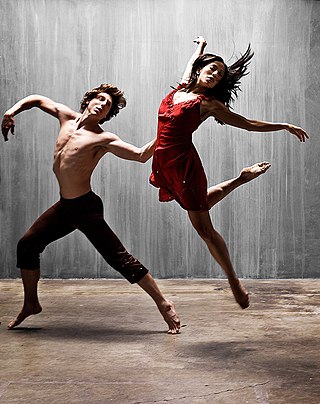
Dance is an art form, consisting of sequences of body movements with aesthetic and often symbolic value, either improvised or purposefully selected. Dance can be categorized and described by its choreography, by its repertoire of movements or by its historical period or place of origin. Dance is typically performed with musical accompaniment, and sometimes with the dancer simultaneously using a musical instrument themselves.

Gymnastics is a type of sport that includes physical exercises requiring balance, strength, flexibility, agility, coordination, artistry and endurance. The movements involved in gymnastics contribute to the development of the arms, legs, shoulders, back, chest, and abdominal muscle groups. Gymnastics evolved from exercises used by the ancient Greeks that included skills for mounting and dismounting a horse, and from circus performance skills.

Aerobics is a form of physical exercise that combines rhythmic aerobic exercise with stretching and strength training routines with the goal of improving all elements of fitness. It is usually performed to music and may be practiced in a group setting led by an instructor. With the goal of preventing illness and promoting physical fitness, practitioners perform various routines. Formal aerobics classes are divided into different levels of intensity and complexity and will have five components: warm-up, cardiovascular conditioning, muscular strength and conditioning, cool-down and stretching and flexibility. Aerobics classes may allow participants to select their level of participation according to their fitness level. Many gyms offer different types of aerobic classes. Each class is designed for a certain level of experience and taught by a certified instructor with a specialty area related to their particular class.

Rhythmic gymnastics is a sport in which gymnasts perform individually or in groups on a floor with an apparatus: hoop, ball, clubs, ribbon and rope. The sport combines elements of gymnastics, dance and calisthenics; gymnasts must be strong, flexible, agile, dexterous and coordinated. Rhythmic gymnastics is governed by the International Gymnastics Federation (FIG), which first recognized it as a sport in 1963. At the international level, rhythmic gymnastics is a women-only sport.

Physical fitness is a state of health and well-being and, more specifically, the ability to perform aspects of sports, occupations, and daily activities. Physical fitness is generally achieved through proper nutrition, moderate-vigorous physical exercise, and sufficient rest along with a formal recovery plan.

Pilates is a type of mind-body exercise developed in the early 20th century by German physical trainer Joseph Pilates, after whom it was named. Pilates called his method "Contrology". It is practiced worldwide, especially in developed countries such as Australia, Canada, Germany, South Korea, New Zealand, the United Arab Emirates, the United Kingdom, and the United States. Pilates uses a combination of around 50 repetitive exercises to spur muscle exertion. Each exercise flows from the "five essentials": breath, cervical alignment, rib and scapular stabilization, pelvic mobility, and utilization of the transversus abdominis. Each exercise is typically repeated three to five times. As of 2023, over 12 million people practice Pilates.

A drum circle is an informal gathering of percussionists and dancers who meet in public for the purpose of playing drums and dancing. Often seen at parks and beaches. Percussionists usually gather in a circle and dancers are often seen in the centre of the circle. The participants make up the music as they go along, using their listening and playing skills to make musical connections and express themselves in any and all ways that feel right. Drum circles often attract both regulars and spontaneous participation and they can range in size from a handful of players to circles with thousands of participants. Defining values of a drum circle include equality, autonomy, inclusivity and freedom of expression.

An isometric exercise is an exercise involving the static contraction of a muscle without any visible movement in the angle of the joint. The term "isometric" combines the Greek words isos (equal) and -metria (measuring), meaning that in these exercises the length of the muscle and the angle of the joint do not change, though contraction strength may be varied. This is in contrast to isotonic contractions, in which the contraction strength does not change, though the muscle length and joint angle do.
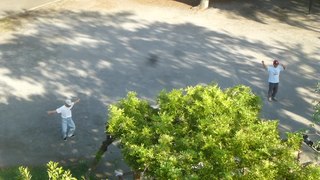
Radio calisthenics are warm-up calisthenics performed to music and guidance from radio broadcasts. Originating from the United States, they are popular in Japan and parts of China, North Korea and Taiwan.
Eurythmy is an expressive movement art originated by Rudolf Steiner in conjunction with his wife, Marie, in the early 20th century. Primarily a performance art, it is also used in education, especially in Waldorf schools, and – as part of anthroposophic medicine – for claimed therapeutic purposes.

In weight training, a kettlebell is a cast-iron or cast-steel ball with a handle attached to the top, resembling a cannonball with a handle. It is used to perform many types of exercises, including ballistic exercises that combine cardiovascular, strength and flexibility training. Kettlebells are the primary equipment used in the weight-lifting sport of kettlebell lifting.
The Kodály method, also referred to as the Kodály concept, is an approach to music education developed in Hungary during the mid-twentieth century by Zoltán Kodály. His philosophy of education served as inspiration for the method, which was then developed over a number of years by his associates. In 2016, the method was inscribed as an item of UNESCO Intangible Cultural Heritage.

Bodyweight exercises are strength training exercises that use an individual's own weight to provide resistance against gravity. Bodyweight exercises can enhance a range of biomotor abilities including strength, power, endurance, speed, flexibility, coordination and balance. Such strength training has become more popular among recreational and professional athletes. Bodyweight training uses simple abilities like pushing, pulling, squatting, bending, twisting and balancing. Movements such as the push-up, the pull-up, and the sit-up are among the most common bodyweight exercises.
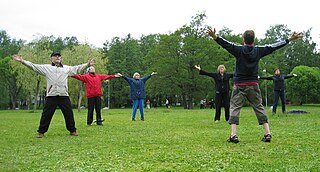
Asahi is a Finnish health exercise based on the eastern traditions of tai chi, qigong, yiquan and yoga, with a western scientific viewpoint.
In Australia, calisthenics is a team-based competitive performing art taking elements of rhythmic gymnastics and ballet combined with a strong emphasis on theatricality, costume, dance and musical interpretation. Since the 1950s Calisthenics has been an entirely female art form, however males have recently been re-introduced in the younger age groups. The art form was created entirely in Australia and can be easily differentiated from traditional calisthenics by its focus on competition and choreographed theatrical performance instead of simple synchronized exercise. The word itself comes from the Greek words for beauty and strength. Calisthenics is currently practiced in all states except Tasmania and has recently been introduced in New Zealand.
The Universal White Brotherhood (UWB) is a religious movement founded in Bulgaria in 1897 by Peter Duenow. It was later established in France in 1937 by Omraam Mikhaël Aïvanhov, one of Deunov's followers.
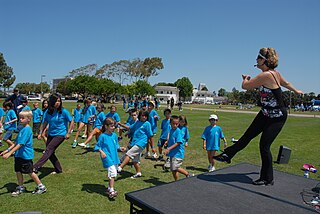
The interplay of exercise and music has long been discussed, crossing the disciplines of biomechanics, neurology, physiology, and sport psychology. Research and experimentation on the relation between music and exercise dates back to the early 1900s, when investigator Leonard Ayres found that cyclists pedaled faster in the presence of a band and music, as opposed to when it was silent. Since then, hundreds of studies have been conducted on both the physiological and psychological relationship between music and physical activity, with a number of clear cut relationships and trends emerging. Exercise and music involves the use of music before, during, and/or after performing a physical activity. Listening to music while exercising is done to improve aspects of exercise, such as strength output, exercise duration, and motivation. The use of music during exercise can provide physiological benefits as well as psychological benefits.
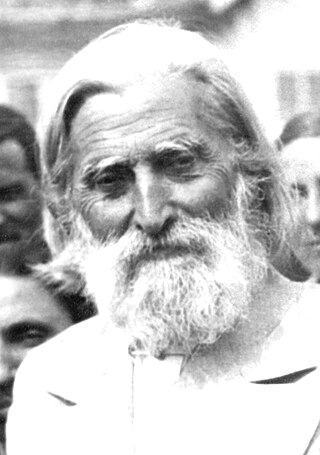
Peter Dunov, also known by his spiritual name Beinsa Douno, and often titled Uchitelyat by his followers, was a Bulgarian philosopher and spiritual teacher who developed a form of Esoteric Christianity known as the Universal White Brotherhood. He is widely known in Bulgaria, where he was voted second by the public in the Great Bulgarians TV show on Bulgarian National Television (2006–2007). Dunov is also featured in Pantev and Gavrilov's The 100 Most Influential Bulgarians in Our History. According to Petrov, Peter Dunov is “the most published Bulgarian author to this day.”
Sanford Bennett (1841–1926) was an American businessman and writer associated with the physical culture movement, best known for his publications on anti-aging and natural hygiene.

Gyrotonic, also known as the Gyrotonic Expansion System, is a system of exercise that was developed by Juliu Horvath in the 1980s. It is centered around enhancing spinal movement in three dimensions, which not only focuses on increasing the functional mobility of the spine but also building the strength and flexibility of the muscles surrounding it. It focuses on using spiral and circular patterns to move the body in all three planes: frontal, sagittal, and horizontal. The system consists of two complementary exercise methods - the Gyrotonic and Gyrokinesis Methods.


















